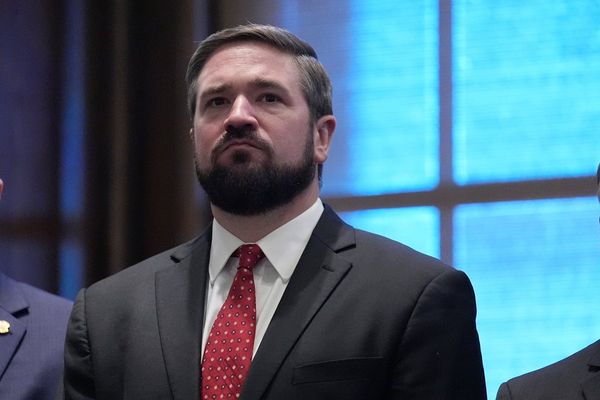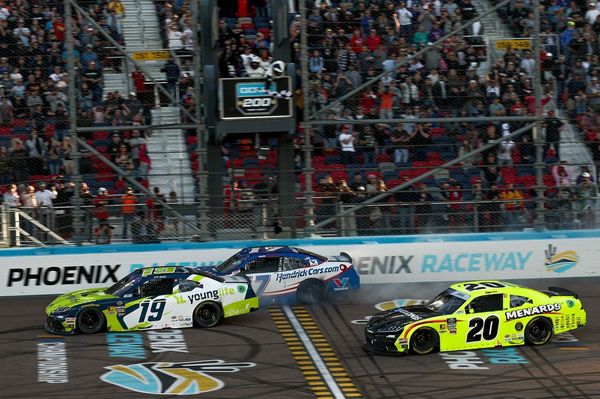
One, two, three and four.
Four U.S. regional banks fell in two months, victims of bank runs by their customers, who were worried about losing their funds.
It all started on Mar. 8 with the announcement of Silvergate, a bank serving the cryptocurrency industry. It was the first U.S. bank to go out of business since 2020.
"In light of recent industry and regulatory developments, Silvergate (SI) believes that an orderly wind down of bank operations and a voluntary liquidation of the bank is the best path forward."
Investors thought that day that Silvergate was an isolated case because the firm mainly served crypto firms and touched little on other economic sectors.
But two days later, on March 10, the most serious banking crisis since the financial crisis of 2008 began, when the Federal Deposit Insurance Corp., the Federal Reserve and the U.S. Treasury Department said they had closed Silicon Valley Bank. The move was designed to avoid the spread of its problems to the entire financial system and to put out a potential fire very quickly.
Attractive Interest Rates at Silicon Valley Bank
The Santa Clara, Calif., bank was the go-to lender for many tech companies. It provided specialized financial services, industry expertise, a valuable network, and a strong reputation. Beyond that, SVB appeared to benefit from a strategy many banks adopted when the pandemic hit and the Fed cut interest rates to near zero to avert the economy entering a severe recession.
To attract customers, SVB (SIVB) offered higher interest rates on deposits than its larger rivals did. The company then invested its clients' money in long-dated Treasury bonds and mortgage bonds with strong returns.
This strategy had worked well in recent years. The bank’s deposits doubled to $102 billion at the end of 2020 from $49 billion in 2018. In 2022, deposits increased to $189.2 billion.
But everything turned upside down when the Federal Reserve began to raise interest rates, which made existing bonds held by SVB less valuable. The bank had to sell the bonds at a discount to cover withdrawals from its customers. In selling these bond positions, SVB had to take a loss of $1.8 billion.
Due to this loss, SVB suddenly announced that it needed to raise additional capital of $2.25 billion, by issuing new common and convertible preferred shares. This decision caused panic and a run on the bank.
For investors, there is no longer any doubt: most regional banks are sitting on unrealized losses. Added to this is another big problem: uninsured deposits. The FDIC guarantees deposits up to $250,000 only. Basically, all individuals or businesses with more than $250,000 in their accounts would lose anything above the FDIC threshold if the bank defaulted.
Without waiting for widespread panic, regulators also closed Signature Bank in New York on March 12. In the process, they guaranteed all the deposits of the bank's customers and those of SVB.
But this extraordinary intervention failed to restore confidence. Since then, the shares of regional banks have been battered on Wall Street. Concerned eyes immediately turned to First Republic Bank.
For weeks, the bank sought to reassure customers and investors, even obtaining an injection of $30 billion from a coalition of 11 large banks to shore up its liquidity. But in the end, First Republic Bank (FRC) failed and was sold to JPMorgan Chase on May 1.
PacWest and Western Alliance Crashed
The firm was a victim of its business model, which consisted of collecting large deposits from rich clients and paying little or no interest on them. The bank, in turn, offered low-interest mortgages to some of these customers. The strategy showed its limits when interest rates went up.
Convinced that the bleeding is not over, investors are now trying to identify the next victim. A clear sign of the persistence of this crisis of banking confidence: The KBW Nasdaq Regional Banking Index dropped 6% the day after the sale of First Republic Bank to JPMorgan Chase.
"A lot of banks had illiquid balance sheets. They would take significant losses if they had to mark [their assets] to market,” said Ryan Nash, managing director of the financials group research at Goldman Sachs, in a webinar. Many banks had "limited to no shareholder equity and a highly correlated deposit base, particularly among uninsured deposits.”
In addition, many regional banks, Nash said, have "exposure to high-risk commercial real estate areas, such as offices.”
Because property values have declined as office vacancies have increased in many cities across the U.S., many banks are expected to encounter challenges with their commercial real estate portfolios.
"A lot of real estate isn’t so good any more,” Charlie Munger, vice chairman of Berkshire Hathaway, recently warned. "We have a lot of troubled office buildings, a lot of troubled shopping centers, a lot of troubled other properties. There’s a lot of agony out there.”
It is in this context that PacWest Bancorp and Western Alliance Bancorp have crashed since First Republic Bank was sold.
Bloomberg News reported on May 3 that PacWest was exploring various strategic options including its possible sale. PacWest did not deny the information. It said that it's been approached by potential buyers and investors but added that discussions were continuing.
"Recently, the company has been approached by several potential partners and investors - discussions are ongoing. The company will continue to evaluate all options to maximize shareholder value," the Los Angeles, Calif.-based bank said in a statement.
Western Alliance (WALPL) said, in a statement, that t it has not experienced "unusual deposit flows" following the sale of First Republic Bank.
"Total Deposits were $48.8 billion as of Tuesday, May 2, up from $48.2 billion as of Monday, May 1, and flat to Friday, April 28. Quarter to date, deposits are up $1.2 billion from $47.6 billion as of March 31," the firm which is based in Phoenix said.
Sign up for Real Money Pro to learn the ins and outs of the trading floor from Doug Kass’s Daily Diary.







